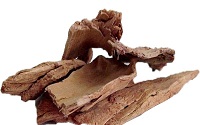As per Ayurveda Eyes are of prime importance among all senses "Sarvendriyanam Nayanam Pradhanam".Laymen may wonder what Ayurveda has to do with the health of
eyes. When it comes to the health of eyes, lenses, cataract surgery, Lasik etc
are buzzwords.In this vision oriented era of tablet-computers or smart phones healthy eyes is a very important topic of discussion. Very few know about a specialty in Ayurveda named Salakya Tantra
that deals with diseases of head in general. Netra Chikitsa is the branch within
Salakya that deals particularly diseases and health of eyes.
NETRARAKSHA PATHYA
Ayurveda enlists a few dietary as well as other factors called NETRARAKSHA
PATHYA those can be simply incorporated in your daily diet and regimen if you are
looking forward for better health of eyes. Also,there are certain things that have to be abandoned for the better health of eyes.
 DO’s
DO’s
Pure cold water should be drunk in plenty.
Among fruits include more grapes, gooseberries and
pomegranates.
Carrot, radish and leafy are vegetables which are good for
eyes.
Among rice verities Red rice is the best choice.Wheat and
barley are good choice among other cereals.
Green gram should be included in daily diet.
Prefer bird meat like chicken, turkeys etc.
Among fats ghee is the best.
Use of umbrellas that protect from sunlight.
Proper care of foot by applying oil and use of footware.
DONT’s
Food that cause indigestion.
Use of sesame oil for cooking and application on head.
Food with sour taste, also hot and spicy food.
Looking at very shiny, quick moving and minute objects.
Sleeping during day time, and keeping awake at night.
There are various treatments mentioned in Ayurveda for
improving the health of eyes as well as for getting cured from various
ophthalmic disorders. Some of them can be practised as part of daily regimen or
Dinacarya.
Application of collirium (Kajal, kanmashi) or Anjana is an example. The eye-liner we use today is actually a modified kind of collirium.
Murdha Thaila or oil application on head using suitable medicated oils is also mentioned among Dinacarya.
Use of Triphala as Netra Rasayana and Padabyangam
or application of oil on foot should be carried out effectively.
There are so many other treatments including various
internal medications as well as therapeutic procedures for curing Ophthalmic
Diseases.
Seka - Bathing the eye using medicated water or milk.
Aschothana - Instilling medicated drops in eyes.
Bidalaka - External application of medicated paste over the lids.
Nasya - Nasal administration of medicated ghee,oil etc.
Nasya - Nasal administration of medicated ghee,oil etc.
Tharpana - Retaining medicated ghee in eyes.
Shirodhara - Pouring medicated oil or decoction on forehead.
Jalaoukavacarana - Blood letting using freshwater leeches etc. to
name a few.
Apart from these different surgical procedures are also practised in like that of Pterygium etc.







